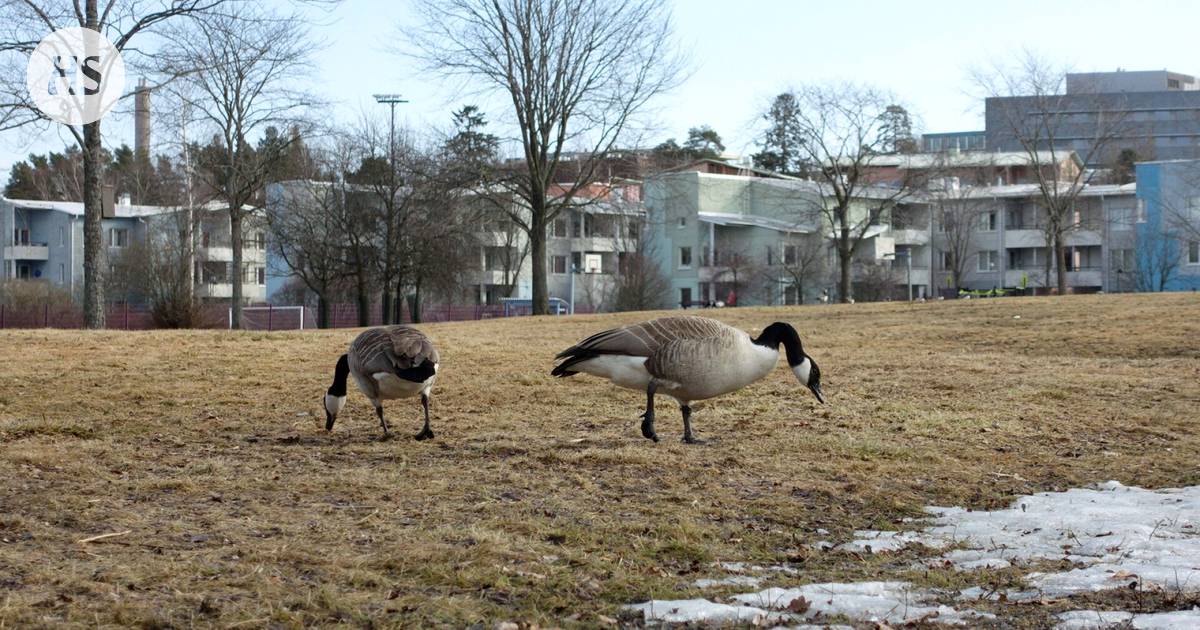The application has been downloaded approximately 200,000 times. During Easter, around 48,000 observations were made there during one day.
From last winter despite the spring migration of birds has progressed, says bird conservation and hobby organization Bird Life Suomi. One big help in monitoring bird migration has been developed at the University of Jyväskylä Spring of migratory birds -application.
A year ago, the application identified 150 bird species.
“Now, as far as I remember, it recognizes 263 species, i.e. all the species that nest in Finland or that you can imagine seeing or hearing here”, academy professor Otso Ovaskainen About the University of Jyväskylä.
Chief Application Architect Ari Lehtiö says that the application has now been downloaded approximately 200,000 times and, for example, during the Easter weekend, approximately 48,000 observations were made on the application in one day.
A year ago, it was reported that the application was going to be further developed, and Ovaskainen is happy that it has made excellent progress during the winter.
“Furthermore, we have received further funding, so for at least five years we can continue and develop this,” Ovaskainen says.
The Spring of Migratory Birds application is included as a digital part of the University of Jyväskylä kansalaistiedekeskusta, which is financed by the Jane and Aatos Erko Foundation. The application is part of the science center’s natural scientist module, where other mobile-based citizen science applications already exist – and according to Ovaskainen, new ones are also coming.
Ovaskainen says that in the development work more species have been included in the application and in addition it recognizes species that were already included in the past better and more reliably.
“We have improved user-friendliness. Now, for example, from your own recordings and identifications, you can better listen to where, for example, Kuikka was in the recording. You can see that too spectogrammin (how the sound signal is presented) i.e. it is a sound visualization and it helps to visualize the sounds of the species.”
The reference sound of the species has also been introduced into the application, so now you can listen to what other sounds the birds have.
“From our point of view, the most important reform is bringing the point calculation network into the application,” Ovaskainen explains.
Point and line calculation is a matter coordinated by Luomus, or the Central Museum of Natural Sciences, and according to Ovaskainen, the best bird information in Finland is based on it. The line and point counting places are standard routes and places where, for the last 40 years, people who know the birds well by their sounds have regularly visited the same places every year to do a standard five-minute count.
“They listen to what birds are heard during five minutes and write them down,” says Ovaskainen.
Ovaskanen according to the application, the point calculation option will be opened on April 9. At that time, the University of Jyväskylä organizes a civics event Spring of migratory birds.
“In this pilot phase, we have cooperation with the cities of Jyväskylä and Helsinki and Metsähallitus. Approximately one hundred point counting stations have been taken to the countries of Jyväskylä and Helsinki. Metsähallitus has them in ten national parks and in a few areas important for birds”, which are not national parks.
The points calculation locations are shown in the new version of the application. In addition, information boards have been taken to the counting places in Maasto, which tell what it is about and also have a QR code that can be scanned with a phone.
“When you scan the code, the point calculation is activated and it makes the phone record for five minutes. It gives you information about which birds appear in the recording. The recording is really important from the point of view of the research, because it is a standard form of calculation and in that sense just as important as the point calculations made by Luumus so far.”
Ovaskainen talks about the ongoing calibration project, where the data produced by citizens on their phones can be seamlessly combined with the data collected by Luumus over 40 years.
“So that they are consistent, this year Luomus will do some point counting at the same time, both by experts and by recording with the application. In this way, we try to make the materials comparable.”
According to Ovaskainen, the material collected with the application has already been used in scientific research, and in the future it will be possible to do it more efficiently than before.
STT’s largest owner is Sanoma, whose largest individual owner is the Jane and Aatos Erko foundation. Helsingin Sanomat is also part of Sanoma.
